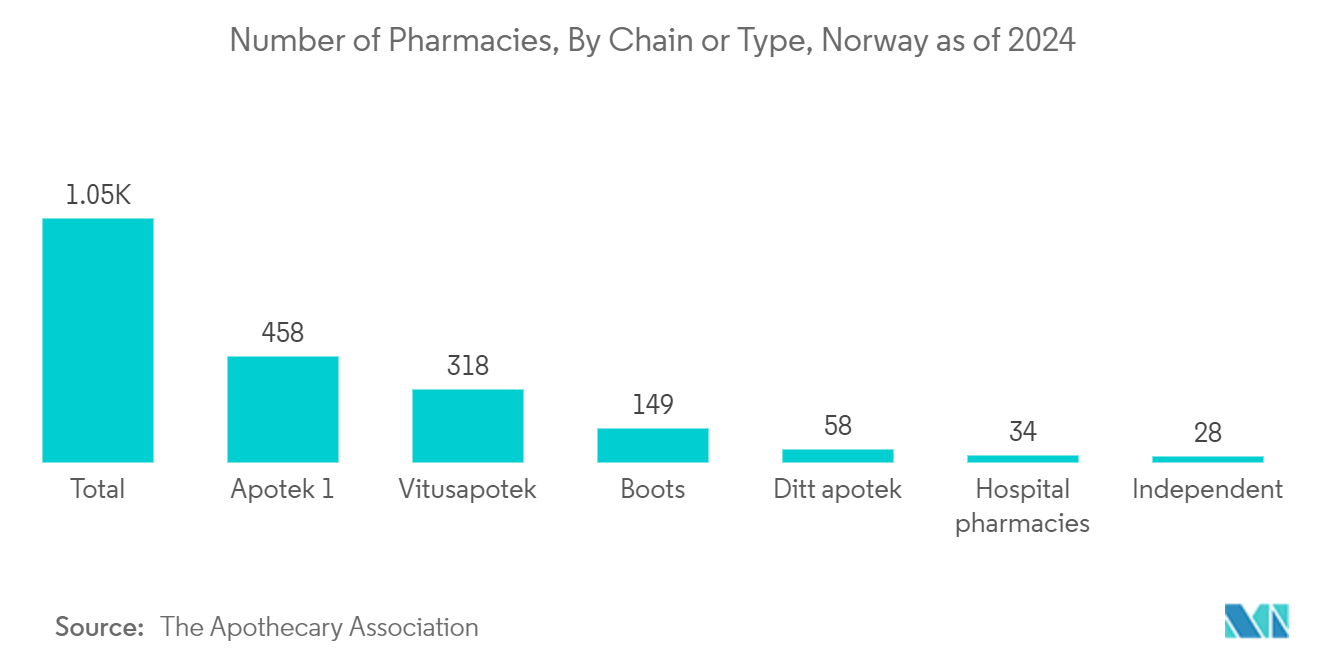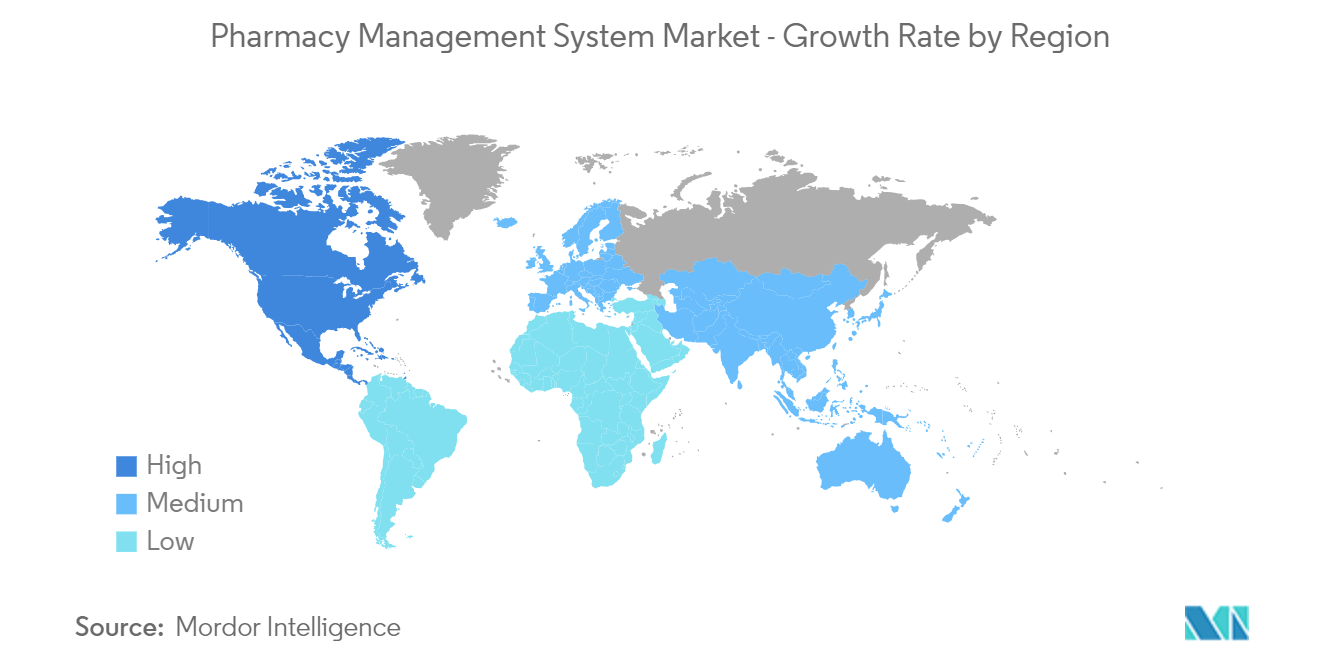Market Trends of Pharmacy Management System Industry
Chained Pharmacies Expected to Drive Market Growth
- The growing number of chained pharmacies creates demand for pharmacy management systems to enhance operational efficiency, inventory management, regulatory compliance, data integration and centralization, customer relationship management, and streamline prescription processing.
- The healthcare industry’s growth is propelled by a rising demand for streamlined healthcare services and the adoption of advanced technologies, notably AI, in inventory management. Additionally, the pharmacy industry’s appetite for inventory management software is set to surge, fueled by a growing embrace of pharmacy automation systems and a heightened focus on reducing medication errors.
- The expansion of pharmacy chains is driving the need for pharmacy management systems by introducing complexities that require efficient, scalable, and compliant solutions. For instance, the India-based MedPlus pharmacy chain has established itself as one of the largest organized retail pharmacies nationwide, with a significant presence in southern India. The company plans to add 600-700 stores annually, focusing on market penetration and expansion into new states.
- Moreover, global players are engaging in strategic initiatives to expand their business worldwide. In December 2023, hospital and pharmacy chain Aster DM Healthcare Ltd stated its plan to acquire private operators to fuel expansion in India after hiving off its Gulf business for USD 1 billion. Currently, Aster operates 34 hospitals and hundreds of clinics and pharmacies across India and the Gulf.

North America to Hold a Major Market Share
- The healthcare industry across North American countries is undergoing enormous alterations, fueled by new technologies and the implementation of new healthcare statutes and reforms. Almost all facets of healthcare are evolving, including insurance coverage and healthcare data analytics to create efficient treatment regimens.
- Many pharmacies use a historical business model, although it has begun to include modern technologies and improvements in customer care. In contrast to using their licenses to the fullest extent possible (such as offering counseling and point-of-care testing), retail chemists in the United States are highly educated medical professionals who spend a disproportionate amount of time counting pills and handling clinical corrections. It might also be possible to help employees concentrate on these activities by automating redundant processes and less critical aspects of their profession.
- Due to the rise in the burden on pharmacists, increasing consumption of over-the-counter (OTC) and prescription drugs is driving the adoption of pharmacy management systems in the region. For instance, according to Statistics Canada, retail sales of prescription drugs in Canada have seen a significant rise. The sales of prescription drugs increased to CAD 9.6 billion (~USD 6.93 billion) in the third quarter of 2023 from CAD 8.4 billion (~USD 6.07 billion) in the third quarter of 2022.
- Moreover, most new prescription drugs are sold first in the United States before they reach other nations. PMS allows pharmacists to stay up to date on this information as it can integrate with drug information databases to provide real-time access to the latest prescribing information, potential side effects, and drug interaction warnings for these new medications.
- The number of pharmacies and drug stores in the United States increased from 27,848 in November 2022 to 30,739 in November 2023. This rise in the number of pharmacies is anticipated to drive demand for pharmacy management software to automate tasks such as inventory management, prevent medication errors, and automate dosage calculations.


